|
|
|
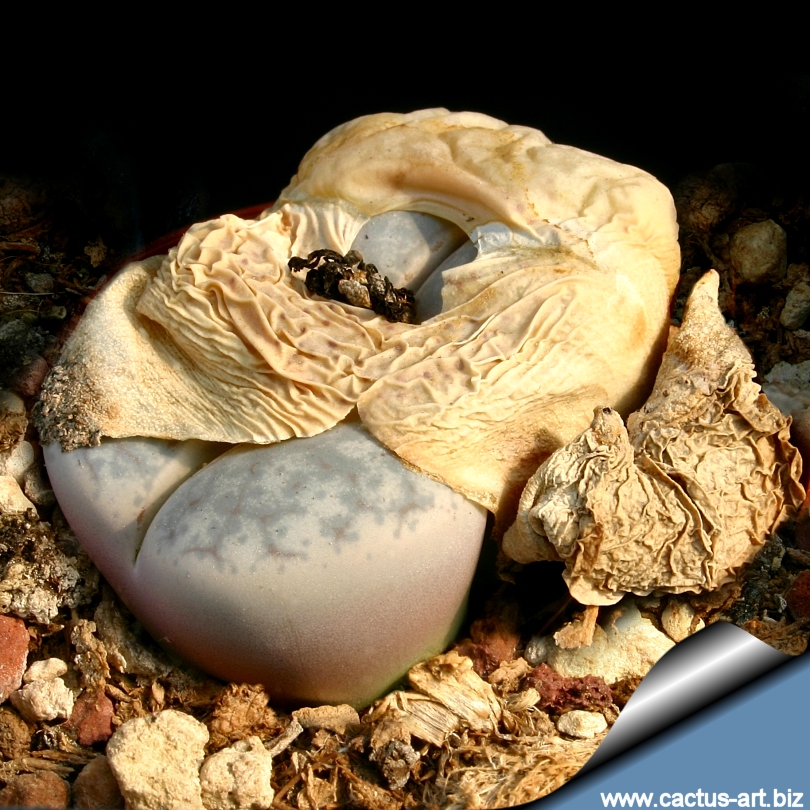
Nearly
white body and top with few pale grey markings, stonelike. Flowers
yellow.
|
|
Description: Lithops
pseudotruncatella is a very free-
growing species, forming clumps. It was one of first plant of this genus
discovered and for a long time one of the first representative in
European collections. Generally this Lithops is
characterized by greyish
colour with darker ramosely branched
marbling on the upper surfaces,
but it is also a very variable taxon in which a number of variety and
forms has been described. The status of these is uncertain.
The body is medium to very large, solitary or
variously branched with more of 20 heads. Facial diameters 25-50 X
20-35 mm and up to 4 cm tall.
Flowers: Yellow (occasionally white), medium to very large, up to
50 mm Ø, mostly 25-40 mm Ø.
Lithops
pseudotruncatella comprises several more or less intergrading and
distinct variety:
- ssp. pseudotruncatella
(N.E. Brown) N.E. Brown 1908. Cole numbers:
C067, C070, C263, C315 “alpina”, C068, C381 “mundtii”, C099,
C100 “clear form”.
It is a medium to very large sized elliptical plant about 40 X 30 mm
wide, the body is flat to slightly convex with a shallow fissure,and
lobes conjunct. It branches easily and forms clumps with up to 20 (or
more) heads, but usually less. It is somewhat variable in colour,
usually opaque, smooth to very slightly rugose, uniform pale grey or
beige tinted with variously shaded. Face, margins and shoulders dull
grey. Windows and margins usually not clearly distinguishable, In the
upper surface there a broken network of irregularly and extensively
branched tree-like rubrications that sometimes are reduced to a
scattering of short lines, dashes and dots; the ends often finely
ramose and tapering off into the outer margins.
- ssp. pseudotruncatella var. elisabethiae
(Dinter) De Boer & Boom 1933 Cole numbers:
C187
It is quite similar to the standard
variety but whit a peculiar bluish-pink colour.
- ssp. pseudotruncatella var. riehmerae
D.T. Cole 1987 “edithiae” (var. edithae (N.E.Brown) De Boer) Cole
numbers: C097
Not very different from the standard variety, it differs mainly in its
generally smaller size. The head colour is pale grey colour with less
extensive markings.
- ssp. archerae
(De Boer) Cole 1967 (L. archeri De Boer) Cole
numbers: C104, C306
This subspecies is easily recognized for
its truncate profile and round-elliptic face, the uniform milky
grey-green colour is also very characteristic of this plant.
- ssp. dendritica (Nel) De Boer &
Boom 1946(L. dendritica Nel. L. farinosa
Dinter.) Cole numbers: C072, C073, C357,
C384, “farinosa”
C245, “pulmonuncula”C071(var.
pulmuncola (Jacobsen) Jacobsen)
This form is distinguishable for the more regularly branched
channels and rubrications that forms an almost a honeycomb pattern.
The face has usually a reddish colour.
- ssp. groendrayensis (Jacobs.) D.T.
Cole 1961. Cole numbers: C239, C244 “Witkop form”, C246 Almost
uniform pale grey-white in colour with minutely pin-pricked or
wrinkled top surface.
- ssp. volkii (Schwant. ex H.W. de
Boer & B.K. Boom) D.T. Cole 1961 Cole numbers: C069
The face of this form is pale bluish-white with very few
rubrications and few or no dusky dots.a
Cultivars:
- ssp. pseudotruncatella
cv. Albiflora “White flowering-form”. Cole
numbers: C264
This cultivar has white flowers instead
of yellow, but the plant is identifiable only when in flower.
- ssp. Archerae cv. 'Split Pea'
1999 Green form.
|
|
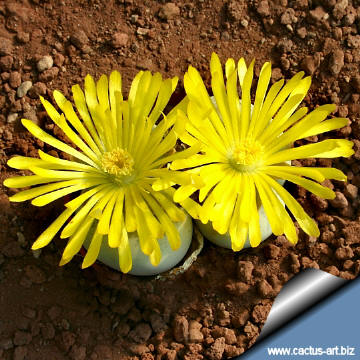 |
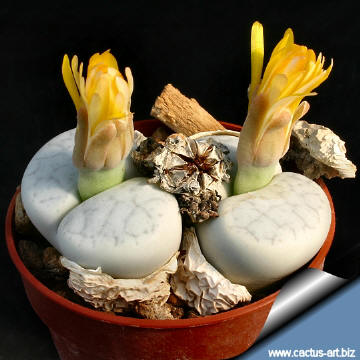
|
|
Advertising
|
|
|
|
Family: Mesebrianthemaceae (Aizoaceae)
Scientific name:
Lithops pseudotruncatella subsp. volkii
(Schwant. ex De Boer
& Boom) Cole (1961)
Synonym: L. pseudotruncatella Pallid Form
Origin: Namibia
|
|
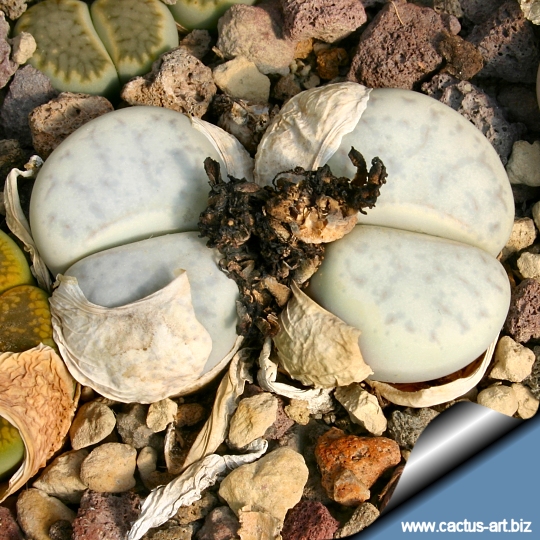
Each year two leaves
are produced at right angles to the old pair of leaves. The growth
period ends when the yellow blossoms come out of the cleft.
In the
winter
season the plant doesn’t need
watering, but they will still be
growing, the new
bodies will be increasing in size as the old outer
leaves begin to shrivel. In fact the plant in this time
extracts
water and
nutrient stored in the outer
succulent leaves, allowing them to
dehydrate relocating the water to
the rest of the plant and to the new leaves that form during this period until the old leaves are reduced to nothing more than
"thin papery shells".
|
|
|
|
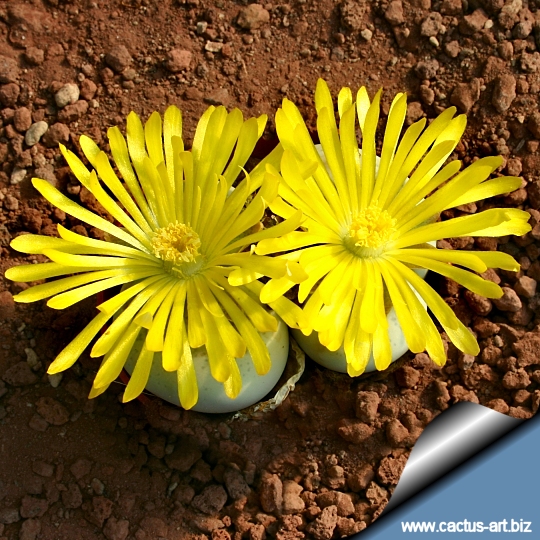
Photo of conspecific taxa, varieties, forms and cultivars of
Lithops pseudotruncatella.
|
|